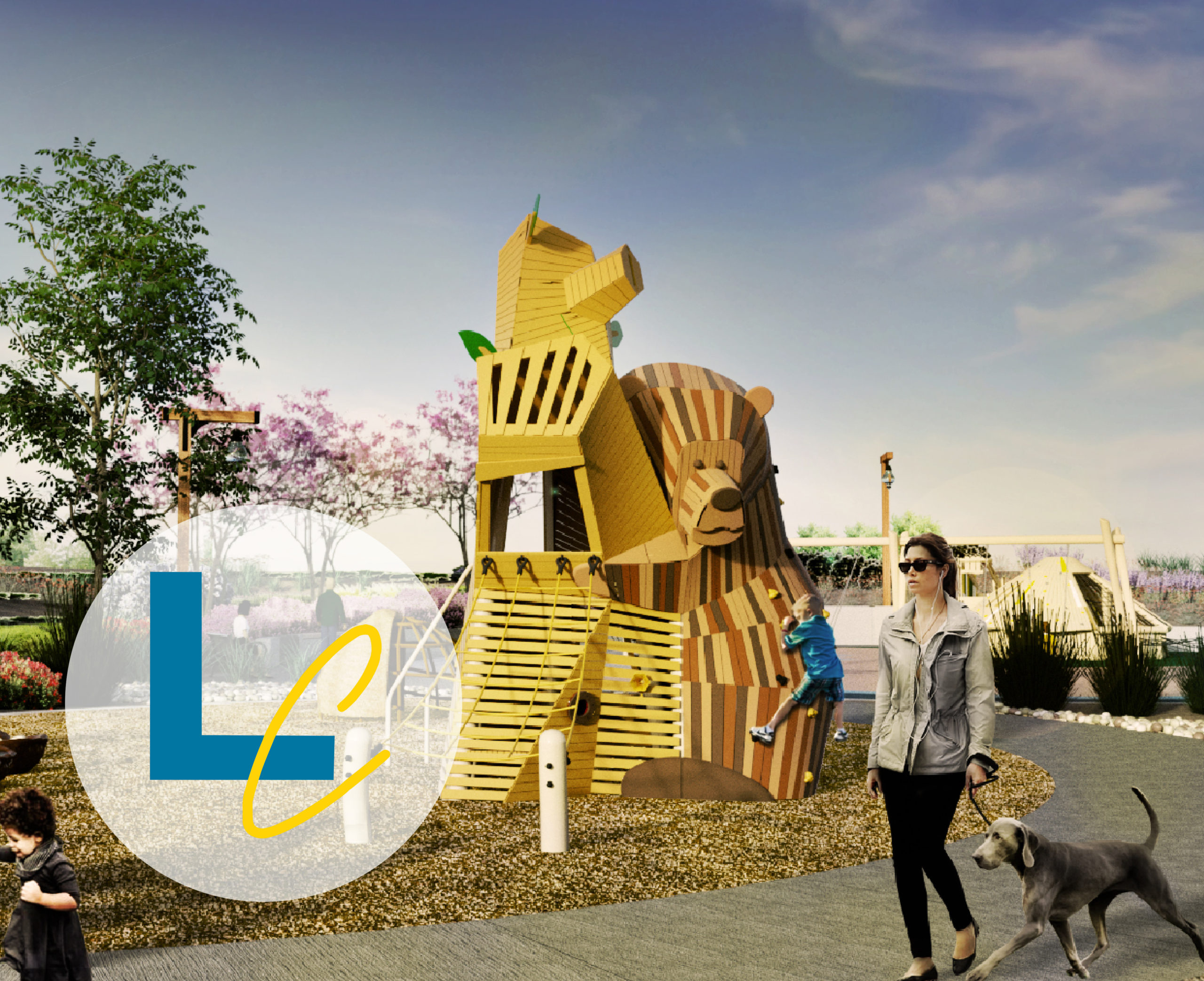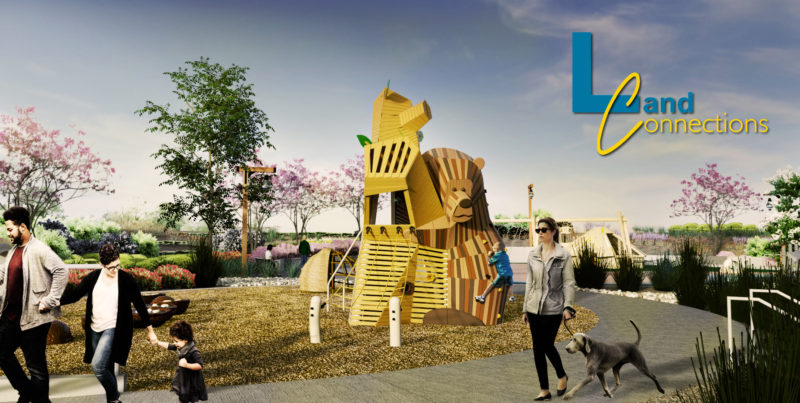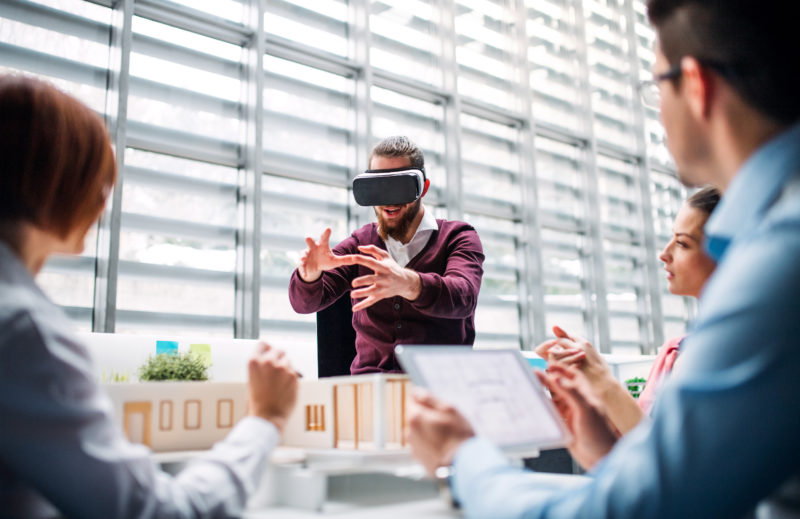
Land Connections–Technological Advancements in Visualizing Landscapes Through Virtual Reality

From ancient to modern times humans have evolved our communication methods from primitive cave paintings to modern computer-aided drawings; the evolution is largely attributed to advances in technology. Virtual reality (VR) is the latest advancement in technology that can aid humanity in our evolution. What sets VR apart from previous visual communication technologies is that the technology enables users to be fully immersed in a completely fictional environment. VR should be considered a highly sophisticated tool that allows people to experience what is currently intangible. This is the exact reason VR has been universally embraced by gamers across the globe. By very definition, VR is a design tool that communicates what is in our imagination and allows others to experience it through multiple sensory systems.
It is no secret that design clients have difficulty visualizing designs from traditional single-plane plans. This is completely understandable as it is very difficult for those who are not trained in design to understand how scale, order, unity, variety, and harmony influence the feel of a design. VR helps make ideas tangible and aids in client understanding as they review designs. Instead of showing a client static concept graphics in a highly formal PowerPoint presentation, we can place them right into the design where they can walk through a space and experience it with full autonomy. They are free to see the first-person scale of trees in the landscape, walk through an urban center experiencing the variety and transitions between spaces, explore countless different materials, colors, and texture combinations before making decisions, and even sit and relax on a grass patch overlooking a playground as if preparing for a family picnic. They can feel the harmony or lack thereof within the design without ever having to actually build it. This VR experience enables clients to become more attached to key design features and may allow them to make better and more informed value engineering decisions. The ability to fully communicate design intent with the client is absolutely key for a designer to convey and even sell their vision.

Not only can VR aid in communication, but it can also support design development. Through VR, designers are granted the ability to manipulate space, scale, and order on the fly with instant feedback. This iterative process supports better placemaking because the designer is allowed to reflect and refine based on dynamic changes. Perhaps this immersive iterative process coupled with our ability to showcase key design elements can more effectively serve society and maximize the value of built environments. Virtual reality can also allow us to push the boundaries of our imagination because it is a world with no constraints. Imagine what this could lead to. In the words of Oscar Wilde,” Life imitates art far more than art imitates life.”
It’s important to acknowledge that a VR model is a tool to convey and aid; however, the design must come first. There is a risk of the VR model taking priority over the design which may produce a hollow idea with no substance. The VR experience should not be allowed to overshadow the design process itself, and it is the designer’s responsibility to be cognizant and aware of that danger. It should also be acknowledged that not all projects have the schedule allowance or budget necessary for the creation of VR models. To address this, smaller project segments could be studied as a more cost-effective approach to VR. Can VR coupled with smart 3D modeling programs disrupt the design process enough to produce efficiencies that offset the upfront development cost? Perhaps VR and 3D modeling will not only be part of the design and communication process but part of the construction document process as well. Take for example Revit, which is now fully incorporated into many architectural design firms’ workflows. Revit is a 3D modeling program that integrates the construction documentation process into one powerful program. It also utilizes metadata to incorporate the cost of materials. Imagine a scenario where when a Landscape Architect changes the texture of a seat wall from concrete to a masonry veneer, the cost of that material change can be examined not only aesthetically using VR goggles, but cost-effectively through the use of this embedded metadata associated with this material change. Game changer! There may also be other creative ways to use VR as an efficiency tool that could be revealed as designers get more familiar with the process and capabilities.

VR is the next evolutionary tool aiding design and communication. It allows someone to not just see the design but to feel the design. As landscape architects, we are ultimately hired communicators who extract ideas about outdoor spaces from our brains and realize these ideas through various tools. VR is one amazing tool that we have at our disposal to support the paramount goal of our profession, generating feelings through spatial experience and utilization.
About the Author

Michael is a Landscape Designer at O’Dell Engineering. He holds a BS in Landscape Architecture from Cal Poly and has over 14 years of experience designing parks, playgrounds, trails, streetscapes, and other landscapes. He is especially passionate about the benefits of VR in the landscape architecture profession and enjoys the opportunity to utilize this amazing technology on his projects!
Learn More
For previous Land Connections articles, click here.
For information on joining the O’Dell Engineering team, click here.
To see our landscape architecture project experience, click here.
Go Back